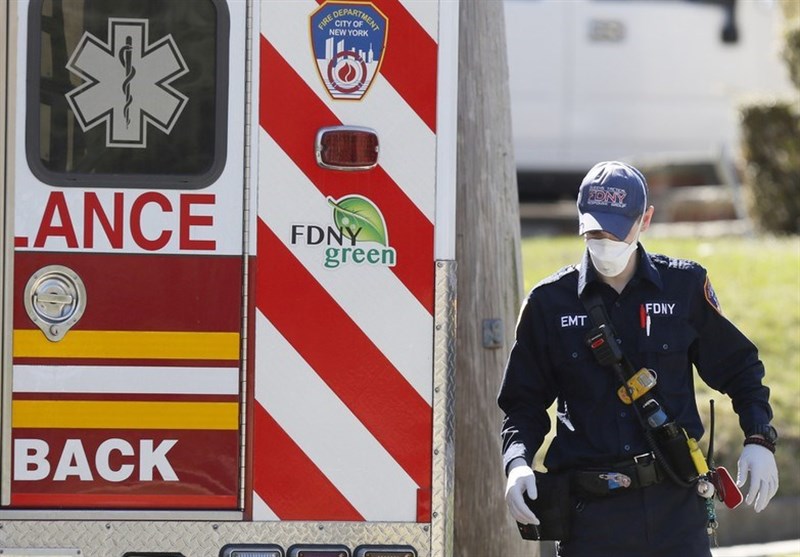Younger People Getting Sicker from COVID-19 across US’ Washington State
TEHRAN (Tasnim) – As the number of COVID-19 cases in the State of Washington grows, so does the number of hospitalizations, owing to the fact that more young people are becoming ill.
US hospital leaders Monday said that a fourth wave of COVID-19 is driving up hospitalizations in Washington, that young patients make up an increasing proportion of their workload and that some are suffering from more severe disease than earlier in the pandemic, the Seattle Times reported.
“We are seeing younger patients than what we saw in earlier surges: Patients in their 30s, 40s and 50s are being hospitalized,” said Tom DeBord, the chief operating officer of Overlake Medical Center in Bellevue, during a news briefing hosted by the Washington State Hospital Association.
At Skagit Valley Regional Health, “the age of the individuals … hospitalized are mostly in their 40s and 50s,” according to Dr. Connie Davis, the organization’s chief medical officer, adding that three patients in their 20s were recently transferred away to benefit from extracorporeal membrane oxygenation — an advanced form of life support.
Davis said younger patients often have obesity in common, a comorbidity associated with severe COVID-19.
Meantime, more than 90 patients were hospitalized with COVID-19 throughout hospitals in the Virginia Mason Franciscan Health system late last week, according to Dr. Chris Baliga, an infectious disease physician.
“40% of our cases were under the age of 40, which is mind-boggling to me. We never saw that earlier in the pandemic,” Baliga said, adding that younger patients appear to be sicker than before.
UW Medicine is currently treating 55 COVID-19 patients at its four hospitals, more than at any time during last summer’s surge, spokesperson Susan Gregg said. The UW system is also encountering more young people sick enough to be admitted.
Hospitalization data from the state Department of Health through April 18 confirms the increase in COVID-19 patients and the age shift individual hospitals are reporting. Since the week of March 21, DOH shows a 40% jump in hospitalizations.
In early January, as vaccinations were just ramping up, about two-thirds of those being hospitalized were 60 or older. DOH’s most recent data show a dramatic flip, with the majority being hospitalized now under the age of 60. The highest number of hospitalizations statewide is among people 40 to 59.
But the picture is not uniform across Washington. Pullman Regional Hospital, for example, has not seen any uptick in COVID-19 hospitalizations, and the rate of positive tests continues to drop, spokesperson Alison Weigley said.
Statewide, total COVID-19 hospitalizations had been hovering at about 350 for the past five weeks, said Cassie Sauer, WSHA president.
That mark has soared to 600 hospitalizations — “a number we haven’t seen in months” — Sauer said, adding that “this looks like the same trajectory we saw in November.”
It’s not entirely clear what is driving these trends.
Washington state prioritized vaccine access to people over 65 in the winter, so more older adults are protected from the coronavirus.
“That’s proof the vaccine is still effective,” Baliga said.
But the hospital leaders also suspect the spread of coronavirus variants and COVID-19 fatigue among younger adults could be playing a role, too. The doctors also expressed concern over vaccine demand and hesitancy among younger adults.
Baliga said the rise of the B.1.1.7 variant, first identified in the United Kingdom, and other coronavirus variants, is likely driving transmission among younger people and could be responsible for severe disease.
“I think that’s what’s driving a lot of what we’re seeing in the younger population,” Baliga said, saying he viewed it as the “single most important” factor driving up numbers.
While it’s increasingly clear that the variant discovered in the UK is up to 50% more transmissible than the original strains of the virus, evidence about whether it causes more severe illness remains mixed. Large, population-level analyses in the UK suggest a higher mortality rate among people infected with the new variant. But a recent, more detailed study of hospitalized patients found higher viral loads among people with the variant, but no indications that the mutant virus was making them sicker.






